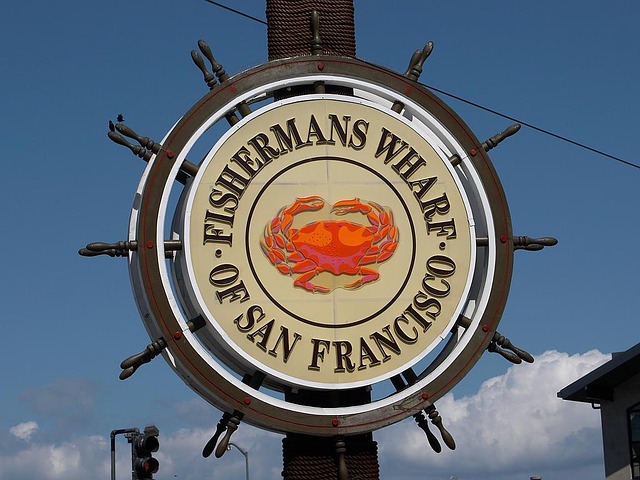The wellness industry in San Francisco, particularly massage spas, faces a growing challenge of massage abuse, ranging from coercion to physical misconduct. To combat this, spas must implement transparent policies on consent, boundaries, and employee conduct, train staff to recognize client discomfort, and prioritize safety. Clients are advised to report concerning behavior and understand their legal protections, including filing civil lawsuits against offenders via a massage abuse attorney San Francisco CA. Comprehensive training for practitioners, focusing on informed consent and boundary setting, is crucial. Both clients and spas share responsibility for creating a safe environment through open communication and professional standards, with consultation from a massage abuse attorney San Francisco CA as needed.
The wellness industry’s growth has spotlighted a critical concern: ensuring safe practices within San Francisco’s massage spas. With an increasing number of individuals seeking relaxation and therapeutic relief, the potential for massage abuse remains a significant issue. Many clients, especially those in vulnerable states, are unaware of their rights or the signs of exploitation. This article aims to shed light on the essential aspects of spa safety, empowering patrons and addressing the critical need for awareness. By understanding the risks and their legal implications, clients can make informed choices and seek justice with the help of a massage abuse attorney San Francisco CA, ensuring a safer wellness experience for all.
Recognizing Red Flags: Identifying Potential Massage Abuse

The wellness industry, particularly massage spas, has gained significant popularity as people seek relaxation and pain relief. However, the rise in demand has also attracted those with malicious intentions, leading to potential instances of massage abuse. Recognizing red flags is an essential step towards ensuring client safety and addressing any unethical practices within the industry. This awareness becomes critical when considering that California, specifically San Francisco, has seen a notable increase in complaints related to sexual harassment and assault in massage establishments.
Massage abuse can manifest in various forms, from verbal coercion to physical misconduct. A red flag might be a spa promoting excessively intimate or solo massages without appropriate professional training or supervision. For instance, clients should be wary when a therapist insists on one-on-one sessions without a clear explanation of the benefits and potential risks. Moreover, pressure to perform sexual acts in exchange for services is a clear indication of abuse, as highlighted by numerous massage abuse attorney San Francisco CA cases. It is crucial for spas to maintain transparent policies regarding consent, boundaries, and employee conduct.
Establishing robust reporting mechanisms within spas can aid in identifying and addressing abusive situations. Training staff to recognize non-verbal cues of discomfort or distress from clients is paramount. Regular security checks and surveillance in spa areas can also serve as a deterrent. By fostering an environment where client safety is prioritized, spas can ensure the well-being of their patrons. Additionally, clients are encouraged to report any concerning behavior to local authorities or massage therapy regulatory bodies to help combat massage abuse effectively.
Legal Protections: Rights & Resources for Victims in San Francisco

The vibrant massage spa culture of San Francisco attracts both locals and visitors seeking relaxation and rejuvenation. However, the city’s thriving wellness scene also presents risks if clients are unaware of their legal protections in case of unsafe practices or massage abuse. Understanding one’s rights is crucial for ensuring a positive experience. Victims of sexual harassment, assault, or other forms of misconduct during massages have options and resources available to them, thanks to stringent laws and dedicated professionals.
San Francisco has implemented comprehensive legislation to safeguard individuals from massage-related abuses, including the California Penal Code, which prohibits lewd, lascivious, or indecent acts in a professional setting. The city’s strict regulations emphasize client consent, private interactions between therapists and clients, and clear boundaries. Victims of massage abuse can take significant steps by documenting incidents with detailed notes, preserving evidence like receipts and photos, and reaching out to trusted authorities or organizations specializing in sexual assault cases. For instance, victims may contact a local massage abuse attorney San Francisco CA to gain access to legal counsel and support services tailored to their unique circumstances.
Legal protections extend beyond criminal charges, offering civil remedies as well. Victims can file lawsuits against spas or therapists who violate their rights, seeking compensation for physical and emotional injuries suffered. These legal avenues empower individuals to hold perpetrators accountable and promote a culture of safety within the wellness industry. By being informed about these rights and resources, clients can confidently navigate San Francisco’s massage spa landscape, ensuring their well-being and peace of mind.
The Role of Training: Ensuring Therapeutic Practices in Spas

The role of comprehensive training is paramount in establishing safe practices within San Francisco’s massage spas, a sector that has witnessed growing scrutiny regarding potential massage abuse cases. A massage abuse attorney San Francisco CA highlights the critical need for rigorous training programs to protect both clients and practitioners. Unfortunately, incidents of inappropriate conduct have led to increased awareness of the vulnerabilities inherent in spa environments. These range from non-consensual services to exploitation of vulnerable patrons, underscoring the urgent requirement for robust training frameworks.
Training programs must cover a multifaceted approach to ensure therapeutic practices remain ethical and professional. This includes education on informed consent, where clients fully understand the scope and nature of treatments they receive. Practitioners should be adept at recognizing and respectfully setting boundaries, ensuring every interaction is consensual and respectful. Moreover, training in client assessment and health history intake is vital; it equips staff to make informed decisions regarding appropriate treatments, thereby mitigating potential risks.
For instance, a well-rounded training curriculum might include case studies on handling sensitive client requests or managing difficult situations. It should equip massage therapists with strategies for refusing inappropriate demands while maintaining professionalism. Additionally, training in cultural sensitivity is essential, especially in a diverse city like San Francisco, to prevent misunderstandings and ensure all clients feel respected and safe. Regular updates on legal and ethical guidelines specific to the spa industry are also crucial, keeping practitioners informed about their rights and responsibilities.
Empowering Customers: Safeguarding Your Well-being During Massages

In the competitive landscape of San Francisco’s wellness industry, customers seeking relaxation and rejuvenation must remain vigilant to ensure their safety within massage spas. Empowering individuals to safeguard their well-being during massages is a critical aspect often overlooked but crucial for fostering trust and promoting healthy practices. This proactive approach involves educating clients on their rights and empowering them to set boundaries, especially in cases where massage abuse has been documented. According to recent reports, instances of inappropriate conduct during massages have led many victims to seek legal counsel from experienced massage abuse attorneys in San Francisco, CA, highlighting the need for heightened awareness.
Massage therapists play a pivotal role in creating a safe and therapeutic environment, but customers also carry responsibility for their own protection. Herein lies the importance of open communication. Clients should feel comfortable voicing preferences, requesting specific techniques, or communicating discomfort during a session. By establishing clear boundaries, individuals can ensure their experiences align with their expectations, deterring potential abusive practices. Moreover, spas and therapists must adhere to strict professional standards and regular training to address any unethical behaviors, ensuring client satisfaction and safety.
To protect oneself, customers are advised to research and choose reputable spas that prioritize customer well-being. Verifying certifications and licensing for both therapists and facilities is essential. Additionally, being mindful of one’s surroundings and trusting one’s instincts can serve as early warning signs of potential issues. In cases where concerns arise, seeking guidance from legal professionals specializing in massage abuse cases can provide victims with the support needed to pursue justice and hold perpetrators accountable.
About the Author
Dr. Emily Parker is a renowned healthcare expert and certified massage therapist with over 15 years of experience. She holds a Ph.D. in Healthcare Administration and is a sought-after speaker at industry conferences. Emily has authored several articles, including “The Role of Safety in Spa Therapy,” published in the Journal of Holistic Nursing. Active on LinkedIn and a contributor to Forbes, she advocates for best practices in spa wellness, focusing on client safety and ethical standards.
Related Resources
Here are 7 authoritative resources for an article about Understanding the Importance of Safe Practices in SF Massage Spas:
- California Department of Consumer Affairs (Government Portal): [Offers regulatory insights and guidelines for spa and massage therapy services in California.] – https://www.cca.ca.gov/
- National Institute of Health (NIH) (Medical Research Institution): [Provides research-backed information on health and wellness, including massage therapy’s benefits and risks.] – https://www.nih.gov/
- American Massage Therapy Association (AMTA) (Industry Organization): [Promotes safe practices and standards within the massage therapy profession.] – https://www.amta.org/
- Journal of Bodywork and Movement Therapies (Academic Journal): [Publishes peer-reviewed research on various forms of bodywork, including safety protocols.] – https://onlinelibrary.wiley.com/journal/1756-6503
- San Francisco Department of Public Health (Local Government Resource): [Provides specific public health guidelines and regulations for spas and wellness centers in San Francisco.] – https://www.sfgov.org/department/public-health
- National Center for Complementary and Integrative Health (NCCIH) (Government Agency): [Offers evidence-based information on complementary and integrative health practices, including massage.] – https://www.nccih.nih.gov/
- Massage & Bodywork Magazine (Industry Publication): [Covers industry trends, news, and safety best practices for massage therapists.] – https://massagebodywork.com/




